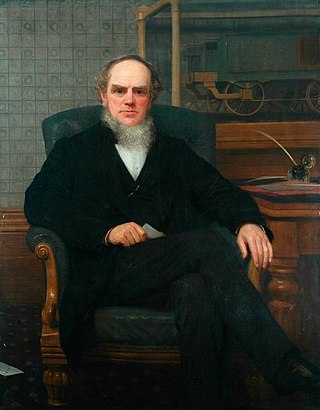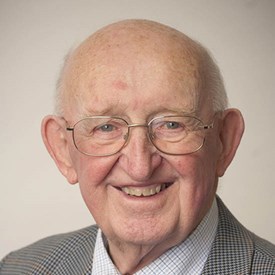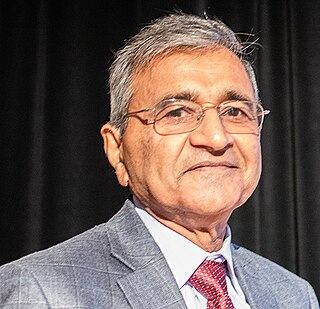| No | Years | Name | Sphere of influence |
|---|
| 1 | 1847–1848 | George Stephenson | railway engineer |
| 2 | 1849–1853 | Robert Stephenson | railway engineer, MP |
| 3 | 1854–1855 | William Fairbairn | manufacturer, trader, ironmaster, bridge, mill wheels, ships, later made baronet. |
| 4 | 1856–1857 | Joseph Whitworth (First term) | pioneer of machine tools, precision engineering |
| 5 | 1858–1859 | John Penn (First term) | Marine Steam engines |
| 6 | 1860 | James Kennedy | Marine engines and locomotives |
| 7 | 1861–1862 | William George Armstrong (First term) | Industrialist and inventor, primarily of armaments. Pioneer of domestic electricity |
| 8 | 1863–1865 | Robert Napier | Ship building and Marine engines |
| 4 | 1865–1866 | Joseph Whitworth (Second term) | pioneer of machine tools, precision engineering |
| 5 | 1866–1868 | John Penn (Second term) | Marine Steam Engines |
| 7 | 1868–1869 | William George Armstrong (Second term) | Industrialist and inventor, primarily of armaments. Pioneer of domestic electricity |
| 9 | 1870–1871 | John Ramsbottom | railway engineer |
| 10 | 1872–1873 | Carl Wilhelm Siemens | Metallurgist and electrical engineer |
| 11 | 1874–1875 | Frederick Joseph Bramwell | Steam engines and boilers |
| 12 | 1876–1877 | Thomas Hawksley | water and gas engineer |
| 13 | 1878–1879 | John Robinson | Steam Engines |
| 14 | 1880–1881 | Edward Alfred Cowper | Metallurgist, inventor of Cowper pot |
| 15 | 1882–1883 | Percy G. B. Westmacott | Hydraulic machinery |
| 16 | 1884 | Isaac Lowthian Bell | Iron master |
| 17 | 1885–1886 | Jeremiah Head | Steam powered agricultural machinery |
| 18 | 1887–1888 | Edward Carbutt | Iron and steel making |
| 19 | 1889 | Charles Cochrane | Iron and steel making |
| 20 | 1890–1891 | Joseph Tomlinson | Locomotive Superintendent |
| 21 | 1892–1893 | William Anderson | Bridges and factories |
| 22 | 1894–1895 | Alexander Kennedy | Professor of engineering, University College London |
| 23 | 1896–1897 | Edward Windsor Richards | Iron master |
| 24 | 1898 | Samuel Waite Johnson | Chief Mechanical Engineer, Midland Railway |
| 25 | 1899–1900 | William Henry White | Naval architect |
| 26 | 1901–1902 | William Maw | Editor, Engineering |
| 27 | 1903–1904 | Joseph Hartley Wicksteed | Testing machines and machine tools |
| 28 | 1905–1906 | Edward Pritchard Martin | Iron and steel making |
| 29 | 1907–1908 | Tom Hurry Riches | Chief engineer, Taff Vale Railway |
| 30 | 1909–1910 | John Aspinall | Chief Mechanical Engineer, Lancashire & Yorkshire Railway |
| 31 | 1911–1912 | Edward B. Ellington | Hydraulic machinery |
| 32 | 1913–1914 | Hay Frederick Donaldson | Royal Ordnance |
| 33 | 1915–1916 | William Unwin | oil engine research |
| 34 | 1917–1918 | Michael Longridge | Chief Engineer |
| 35 | 1919 | Edward Hopkinson | Electric Traction. Died during year of office |
| 36 | 1920–1921 | Matthew Henry Phineas Riall Sankey | Military engineering, oil engines and wireless telegraphy |
| 37 | 1922 | Dr Henry Selby Hele-Shaw | Prof. Mechanical Engineering at Liverpool University |
| 38 | 1923 | John Dewrance | Inventor |
| 39 | 1924 | William Henry Patchell | Electricity supply |
| 40 | 1925 | Vincent Raven | Chief Mechanical Engineer, North Eastern Railway |
| 41 | 1926 | William Reavell | Compressor manufacturer |
| 42 | 1927 | Henry Fowler | Chief Mechanical Engineer, Midland Railway and London Midland & Scottish Railway |
| 43 | 1928 | Richard William Allen | Pumps and Marine equipment |
| 44 | 1929 | Daniel Adamson | Gears, cranes and cutting tools |
| 45 | 1930 | Loughnan St Lawrence Pendred | Editor of The Engineer |
| 46 | 1931 | Edwin Kitson Clark | Locomotive Engineer |
| 47 | 1932 | William Taylor | Lens Manufacturing |
| 48 | 1933 | Alan Ernest Leofric Chorlton | Pumps and Diesel engines, MP |
| 49 | 1934 | Charles Day | Steam and diesel engines |
| 50 | 1935 | Major-General Alexander Elliott Davidson | Mechanised military transport |
| 51 | 1936 | Nigel Gresley | Chief Mechanical Engineer, London & North Eastern Railway |
| 52 | 1937 | John Edward Thornycroft | Ship building and motor vehicle design |
| 53 | 1938 | David E Roberts | Iron and steel manufacture |
| 54 | 1939 | E. Bruce Ball | Motor Vehicles and hydraulic valves |
| 55 | 1940 | Asa Binns | Engineer |
| 56 | 1941 | William Stanier | Chief Mechanical Engineer, London, Midland & Scottish Railway |
| 57 | 1942 | Col Stephen Joseph Thompson | Boilers |
| 58 | 1943 | Frederick Charles Lea | Engineering Professor at Birmingham and Sheffield Universities |
| 59 | 1944 | Harry Ricardo | Automotive engineer. Founder, Ricardo Consulting |
| 60 | 1945 | Andrew Robertson | Prof. Mechanical engineering at Bristol University |
| 61 | 1946 | Oliver Bulleid | Chief Mechanical Engineer, Southern Railway |
| 62 | 1947 | Lord Dudley Gordon | Refrigeration engineering |
| 63 | 1948 | E. William Gregson | Marine engines |
| 64 | 1949 | H. J. Gough | Metal fatigue, engineering research |
| 65 | 1950 | Stanley Fabes Dorey | Chief engineer surveyor |
| 66 | 1951 | Arthur Clifford Hartley | Chief engineer, Anglo-Iranian Oil Co. inventor, Pluto and Fido |
| 67 | 1952 | David Randall Pye | Air Ministry research engineer |
| 68 | 1953 | Alfred Roebuck | Engineering metallurgy |
| 69 | 1954 | Richard William Bailey | High temperature steel and materials research |
| 70 | 1955 | Percy Lewis Jones | Marine engines and ship building |
| 71 | 1956 | Thomas Arkle Crowe | Marine Engines |
| 72 | 1957 | George Nelson | Chairman English Electric |
| 73 | 1958 | Robert Owen Jones | Aircraft Engineer |
| 74 | 1959 | Herbert Desmond Carter | Diesel Engines |
| 75 | 1960 | Owen Saunders | Prof. Mechanical Engineering Imperial College London |
| 76 | 1961 | Charles Hague | Chairman, Babcock & Wilcox |
| 77 | 1962 | John Hereward Pitchford | Internal Combustion engines |
| 78 | 1963 | Roland Curling Bond | Chief Mechanical Engineer, British Railways [14] |
| 79 | 1964 | Frank Mason | Engineer in chief, Royal Navy |
| 80 | 1965 | Harold Norman Gwynne Allen | Power Transmission |
| 81 | 1966 | Lord Hinton of Bankside | Pioneer of nuclear power |
| 82 | 1967 | Hugh Graham Conway | Aero-engines and gas turbines |
| 83 | 1968 | Arnold Lewis George Lindley | Chairman of General Electric Company |
| 84 | 1969 | Donald Frederick Galloway | Manufacturing and machine tool engineer |
| 85 | 1970 | John Lamb Murray Morrison | Prof. Mechanical engineering Bristol University |
| 86 | 1971 | Robert Lickley | Aircraft engineer |
| 87 | 1972 | Lord Stokes | Chief executive, British Leyland |
| 88 | 1973 | John William Atwell | Steel industry and pump manufacture |
| 89 | 1974 | St John de Hold Elstub | Metals |
| 90 | 1975 | Paul Thomas Fletcher | Process plan and nuclear power plant |
| 91 | 1976 | Ewen McEwen | Chief engineer, Lucas |
| 92 | 1977 | Hugh Ford | Professor of mechanical engineering, Imperial College London |
| 93 | 1978 | Diarmuid Downs | Internal combustion engines |
| 94 | 1979 | James Gordon Dawson | Chief Engineer, Shell |
| 95 | 1980 | Bryan Hildrew | Managing Director, Lloyd's Register of Shipping |
| 96 | 1981 | Francis David Penny | Director, National Engineering Laboratory |
| 97 | 1982 | Victor John Osola/Vaino Junani Osola | Process engineer, safety glass |
| 98 | 1983 | George Fritz Werner Adler | Research Director, British Hydromechanical Research Association |
| 99 | 1984 | Waheeb Rizk | Gas turbines at General Electric Company |
| 100 | 1985 | Philip Foreman | Aerospace engineer |
| 101 | 1986 | Bernard Crossland | Prof. Mechanical Engineering, Queen's University Belfast |
| 102 | 1987 | Oscar Roith | Chief Engineer, Department of Industry |
| 103 | 1988 | Cecil Charles John French | Internal combustion engines |
| 104 | 1989 | Roy Ernest James Roberts | Director, GKN |
| 105 | 1990 | Michael John Neale | Tribology |
| 106 | 1991 | Duncan Dowson | Prof of Fluid Mechanics, Leeds University, Tribology |
| 107 | 1992 | Thomas Diery Patten | Offshore engineering |
| 108 | 1993 | Anthony Albert Denton | Offshore engineering |
| 109 | 1994 | Brian Hamilton Kent | Design and engineering management |
| 110 | 1995 | Frank Christopher Price | Technical director |
| 111 | 1996 | Robert William Ernest Shannon | Inspection engineering |
| 112 | 1997 | Pamela Liversidge | Powder metallurgy |
| 113 | 1998 | John Spence | Metallurgy |
| 114 | 1999 | James McKnight | Automotive |
| 115 | 2000 | Denis E. Filer | Automotive |
| 116 | 2001 | Tony Roche | Railway |
| 117 | 2002 | John McDougall | MD of WS Atkins |
| 117 | 2003 | Chris Taylor | Tribology |
| 119 | 2004 | William Edgar [15] | Offshore engineering |
| 120 | 2005 | Andrew Ives [16] | Automobile engine electronics |
| 121 | 2006 | W. Alec Osborn | Automotive |
| 122 | 2007 | John Baxter | Nuclear engineer |
| 123 | 2008 | William M. Banks | Composite materials. Professor, University of Strathclyde |
| 124 | 2009 | Keith Millard | Marine |
| 125 | 2010 | John Wood [17] | Automotive |
| 126 | 2011 | Roderick Smith | Rail engineer |
| 127 | 2012 | Isobel Pollock [18] | Engineering management |
| 128 | 2013 | Patrick Kniveton [19] | Nuclear Engineering - Rolls-Royce |
| 129 | 2014 | Group Captain Mark Hunt | RAF Engineer Officer, Engineering Management, Engineering Education |
| 130 | 2015 | Professor Richard Folkson | Chief Engineer of Ford of Europe, lecturer at University of Hertfordshire |
| 131 | 2016 | Jon Hilton | Kinetic energy recovery system pioneer, Deputy Chairman of Torotrak PLC |
| 132 | 2017 | Carolyn Griffiths | Head of Rail Accident Investigation Branch |
| 133 | 2018† | Geoff Baker | Oil and Gas |
| 116 | 2018† | Tony Roche (Second term) | Railway |
| 134 | 2019 | Joseph McGeough | Manufacturing |
| 135 | 2020 | Terry Spall | Automotive Engineer |
| 136 | 2021 | Peter Flinn | Manufacturing |
| 137 | 2022 | Philip Peel | Power Generation [20] |













